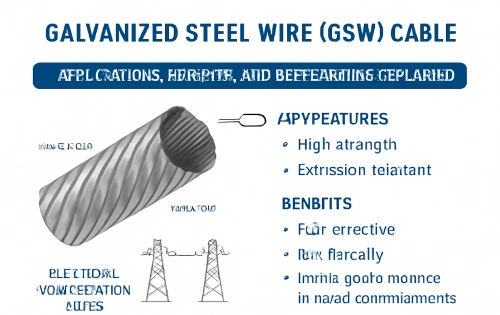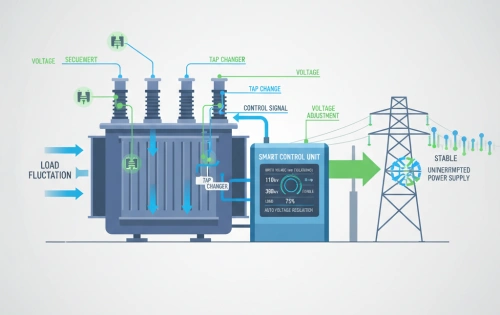How the World's First Power Distribution System Was Born: The Battle of AC vs. DC
Introduction: Powering the Modern World
We often take electricity's profound impact on our daily lives for granted. From the simple act of charging a smartphone to powering entire cities, our modern existence is inextricably linked to a vast and complex electrical distribution system. This engineering marvel wasn't built overnight; it was forged over decades of ingenuity, fierce competition, and groundbreaking scientific discoveries. The ubiquity of this infrastructure means its underlying complexity and historical development are often overlooked. Yet, understanding its origins reveals the remarkable ingenuity required to build the world we inhabit.
The fundamental problem faced by early electrical pioneers was how to efficiently deliver electricity from a central generating station to a multitude of users scattered across different geographical locations. This was the core challenge of creating the world's first power distribution system, which moved beyond localized, isolated applications. A clear societal need for centralized, long-distance power had existed even before electricity's widespread adoption, as evidenced by earlier mechanical systems. The electrical pioneers weren't creating a new demand but were providing a superior solution to an existing power distribution problem.
This article embarks on a fascinating historical journey, tracing the pivotal shift from Thomas Edison's pioneering but inherently limited direct current (DC) system to the revolutionary alternating current (AC) innovations championed by Nikola Tesla and George Westinghouse. It will explore how the "War of the Currents" fundamentally shaped the development of the modern power distribution system and highlight the indispensable role of the distribution transformer in enabling efficient long-distance transmission and, ultimately, powering the world as we know it.

The Spark of Innovation: The Dawn of Early Electricity
Before the advent of centralized power distribution systems, electricity was typically generated directly at the point of use. This meant that a single building or a small group of users often had its own dedicated power source, a stark contrast to today's interconnected grid. In the late 1870s and early 1880s, arc lighting began to emerge, primarily used to illuminate large outdoor spaces or expansive indoor areas like factories. These early arc lamp systems operated on high-voltage (around 3,000 volts) AC or DC, allowing a single generating station to power a string of lamps up to 7 miles (11 km) long. Concurrently, incandescent lighting using low-voltage (100 volts) DC began to appear as a viable option for indoor illumination.
The first electrical system for general use was established in Godalming, England, in 1881. Powered by two water turbines, this system generated AC to supply both Siemens arc lights (250 volts) and incandescent lights (40 volts). This demonstrated an early, albeit small-scale, attempt at an integrated power distribution solution. The foundation for these systems was laid by foundational inventions such as Hippolyte Pixii's DC dynamo in 1832, which was crucial for converting mechanical energy into electrical energy, making industrial-scale generation possible. Joseph Henry's invention of the electromagnetic relay in 1835 provided a way to transmit current over long distances, while Thomas Davenport's 1837 electric motor extended the potential applications of electricity beyond lighting.
Interestingly, the concept of long-distance power transmission was not new. Before electricity, cities had utilized mechanical systems like rope drives (moving cables), pneumatic (pressurized air), and hydraulic (pressurized liquid) transmission. London's hydraulic system, for instance, delivered 7,000 horsepower (5.2 MW) of power through a 180-mile (290 km) network of pipes with water pressure at 800 pounds per square inch (5.5 MPa). These early systems, despite their limitations, familiarized city planners and financiers with the benefits and processes of establishing centralized transmission networks. The existence of these non-electrical transmission methods showed that a societal and industrial need for centralized, long-distance power had long been established. Electrical pioneers were not creating a new demand but were providing a more superior solution to an existing problem of power distribution.
Early electrical systems immediately encountered two major obstacles. First, devices requiring different voltages needed specialized generators and separate lines. For instance, arc lights used 10 kV, incandescent lights used 110 V, and streetcars required large motors at 500 V. Second, generators had to be located relatively close to their loads, typically within a mile for low-voltage devices. This dual challenge set the stage for the transformative role of voltage conversion, which would become the key to efficient power distribution. The inherent limitations of early systems led directly to the search for solutions that could effectively change voltage and transmit power over long distances.

Edison's DC Dream: The Legacy of Pearl Street
Driven by the growing demand for a practical and long-lasting incandescent light bulb, Thomas Edison conceived and publicly launched an integrated system for commercial lighting and power. His vision went beyond a single component; he aimed to create a complete electrical utility system. This vision became a reality on September 4, 1882, with the opening of the Pearl Street Station in Lower Manhattan, New York City. This landmark facility served as the world's first central power plant, initially providing power for 400 lamps across 82 customers. By 1884, its rapid growth saw it supplying 10,164 lamps for 508 customers.
At the heart of Pearl Street were six custom-built "Jumbo" dynamos, each capable of generating 100 kilowatts of power—four times higher than any existing dynamo at the time. The station supplied 110-volt DC electricity. One immense challenge, and one of the most expensive parts of the project, was constructing the intricate underground network of wires and pipes (conduits) to deliver power to customers—a total of 100,000 feet of wire. This constituted the world's first underground urban network. To commercialize electricity, Edison also patented an early electric meter in 1881, designed to bill customers based on their energy consumption. Crucially, this meter was only compatible with direct current.
Despite its revolutionary nature, the rapid growth of Pearl Street's customers highlighted a massive demand for electricity. However, its financial struggles and technical limitations showed that DC was not a scalable solution for large-scale, long-term power distribution. It was a critical first step, but it also revealed deeper challenges. Although Edison’s DC system was an initial success, it faced significant technical and economic hurdles. It was "very inefficient," requiring generating stations to be located very close to their users, typically within one mile. This limitation stemmed from the low-voltage 110-volt DC, which led to immense energy loss over distance and required the use of extremely thick and expensive copper cables.
A major drawback of DC was that it could not be easily converted to a higher or lower voltage. This inflexibility meant that different types of electrical equipment, which required different voltages (e.g., 110 V for light bulbs, 500 V for streetcars, 10 kV for arc lights), often needed separate, dedicated transmission lines. The high cost of Pearl Street's underground conduits and the inherent inefficiency of low-voltage DC transmission underscored the fact that early power distribution systems were subject to the economic constraints of the physics of electricity. This economic barrier was a significant driver in the search for an alternative, more efficient method of transmission. Despite its pioneering status, Pearl Street operated at a loss for several years due to its high initial construction costs and ongoing operational expenses, particularly the large amount of coal required. These inherent limitations meant that Edison's DC system could not effectively meet the growing need for electricity over distance and at different voltages, setting the stage for an alternative solution to emerge.
The AC Revolution: A Transformative Breakthrough
The lack of an ability to efficiently transmit power over long distances was the key engineering obstacle to the expansion of electrical distribution. The solution lay in the development of the distribution transformer. The fundamental principle behind a transformer's operation—electromagnetic induction—was independently discovered by Michael Faraday in 1831. Faraday even conducted early experiments by wrapping coils around an iron ring, creating the first toroidal closed-core transformer.
The induction coil, invented by Reverend Nicholas Callan in 1836, was the first widely used transformer, though it required a vibrating contact to interrupt the DC current for induction to occur. Later, Russian engineer Pavel Yablochkov (1876) innovatively used induction coils as step-up transformers in his arc lighting systems. French chemist Lucien Gaulard and Britain's John Dixon Gibbs demonstrated their "secondary generator" (an open-core device) in London (1881) and Turin (1884), which showed the potential to illuminate a 40 km (25-mile) railway from a single AC generator. However, their design had a fundamental flaw, specifically an inability to reliably regulate voltage.
A critical moment arrived in 1885 when Hungarian engineers Károly Zipernowsky, Ottó Bláthy, and Miksa Déri (the ZBD team) perfected the distribution transformer at the Ganz Works. Their groundbreaking innovations included: introducing a closed magnetic circuit ("core" and "shell" type) design, which was an astonishing 3.4 times more efficient than Gaulard and Gibbs's open-core device. They also proposed the use of parallel-connected loads instead of a series connection, a crucial step for making household power distribution practical. Additionally, they made it possible to use high turn-ratio transformers, allowing network voltage to be much higher than what was required by the end-user (initially 100 volts). They solved the problem of eddy-current losses by inventing the electromagnetic core lamination technique and are credited with popularizing the term "transformer." The iterative development of the distribution transformer, culminating in the ZBD and Stanley designs, was the key technological breakthrough that unlocked the potential of AC. It transformed AC from an interesting but impractical concept into the dominant technology for large-scale, efficient power distribution.
In 1886, working for Westinghouse, American inventor William Stanley Jr. produced the first commercially successful AC distribution transformer. He incorporated his improved design into a fully functional high-voltage AC power distribution system in Great Barrington, Massachusetts. The system successfully stepped up the generator's output to 3,000 volts for long-distance transmission and then safely stepped it back down to 500 volts at the destination, finally proving that AC could safely power a large number of customers.
The core advantage that propelled AC to dominance was its inherent ability to be easily "stepped up" to higher voltages for long-distance transmission and then "stepped down" again near the point of consumption. This advantage is rooted in a fundamental principle of electrical physics: power loss in transmission lines, caused primarily by the resistance of the conductor, is calculated by the formula P=I2R (Power Loss equals the square of the current multiplied by the resistance). This means losses increase exponentially with current; for example, doubling the current increases power loss by four times. By using a distribution transformer to "step up" the transmission voltage (V), the current (I) can be proportionally reduced for the same power (P=VI). Crucially, when the voltage is doubled, the current is halved, but the power loss due to resistance is reduced to a quarter of its original value. This exponential reduction in loss meant that immense energy wastage could be avoided during long-distance transmission. The I2R loss principle was more than just a technical detail; it was the economic driver of AC's success. By minimizing the current through high-voltage transmission, it drastically reduced the cost of lost energy and the need for excessively thick copper cables, making large-scale power distribution systems economically sustainable for the first time. This fundamental principle made long-distance transmission economically viable for the first time, allowing large, centralized generating stations to efficiently serve vast geographical areas, a capability DC simply could not match.
The War of the Currents: The Battle for the Future
In the late 1880s, the burgeoning electrical industry became the battleground for a fierce dispute known as the "War of the Currents." On one side was Thomas Edison, who championed his established direct current (DC) system, and on the other were Nikola Tesla and George Westinghouse, who advocated for the alternating current (AC) system. Nikola Tesla, a brilliant engineer who had briefly worked for Edison, developed the groundbreaking polyphase AC motor and a comprehensive AC transmission system. The industrialist George Westinghouse recognized the immense potential of these innovations and acquired Tesla's patents in 1888. Westinghouse was a firm believer in AC and founded the Westinghouse Electric Company in 1886 specifically to challenge Edison's DC dominance.
Feeling that his entrenched DC business model was threatened by the superior economic advantages of AC and its ability to transmit power efficiently over long distances, Edison launched a relentless public relations campaign. His strategy was to discredit AC by portraying it as inherently dangerous due to its high voltage. This campaign included shocking public demonstrations, which involved electrocuting stray animals with AC, a practice that was nicknamed "the death of Westinghouse." Edison even suggested AC electrocution as a "more humane" alternative for convicted criminals on New York’s death row, despite his previous opposition to capital punishment. Beyond spreading public fear, Edison also leveraged his extensive patent portfolio, filing lawsuits against hotels and offices that adopted AC systems, in an attempt to stifle the spread of the competing technology.
The War of the Currents demonstrates that the adoption of a superior power distribution technology was not merely a technical decision. Aggressive business tactics, such as patent acquisition and strategic underbidding, and the manipulation of public opinion, through Edison's fear-mongering publicity versus Westinghouse's dazzling displays, played a decisive role in determining the standard for the future of the electrical system.
A pivotal moment came when Westinghouse secured the high-profile contract to power the 1893 World's Fair in Chicago, successfully outbidding his competitor, General Electric (formed from the merger of Edison's companies). The fair became a "dazzling showcase" for Tesla's AC system, illuminating the entire exhibition and effectively converting many skeptics, including Lord Kelvin, to the immense potential of AC. Building on the success of the Chicago World's Fair, Westinghouse won a critical contract: to build the AC generators for the monumental hydroelectric plant at Niagara Falls. In 1896, the plant accomplished the remarkable feat of successfully transmitting power 20–26 miles away to Buffalo, New York. This achievement served as an irrefutable and powerful proof of AC's superior long-distance transmission capabilities. These two definitive achievements—the Chicago World's Fair and the Niagara Falls project—are widely considered the unofficial end of the War of the Currents, solidifying AC's position as the dominant and enduring standard for power distribution. AC's ability to power a variety of loads, from high-voltage factories to low-voltage residential customers, from a single generating plant was a key economic and practical advantage in its victory. This "universal system" concept, enabled by the distribution transformer, offered greater flexibility and economies of scale than DC's dedicated lines.
Building the Grid: Components and Connecting Consumers
The fundamental principles of today's vast electrical distribution system are remarkably similar to the first AC systems designed by Tesla and Westinghouse. After power is generated, it is transmitted over long distances through high-voltage transmission systems. Upon reaching a local area, the power is "stepped down" to a lower voltage at local substations via large distribution transformers. This lower-voltage power is then distributed through local distribution lines to cities and neighborhoods. Finally, before the power enters individual homes and businesses, its voltage is stepped down again through smaller distribution transformers located near the customer (such as the common pole-mounted transformer). This multi-stage voltage reduction is crucial for safety and efficiency. The description of power being stepped down again at substations and near customers reveals that the modern power distribution system is not a single, monolithic network but a multi-level hierarchy. This hierarchical approach, enabled by distribution transformers, is essential for safely and efficiently delivering power at the proper voltage to diverse end-users.
The earliest residential wiring systems were very rudimentary, often consisting of bare or cloth-covered conductors secured to building frames with nails. A prominent early method was "knob-and-tube" wiring (popular from 1880–1940), which involved running single wires parallel through porcelain tubes in walls and floors, supported by porcelain knob insulators. While this method dissipated heat well, it was labor-intensive and posed fire risks, especially as insulation aged or insulating materials were blown into wall cavities. Other earlier, less safe methods included running insulated conductors through abandoned gas pipes.
The initial insulating material for conductors in the Edison era was rubber. This rubber contained sulfur, which was corrosive to copper, so it was necessary to tin-plate the copper wires. A cotton braid was often added as an outer covering for mechanical protection. Around 1950, the introduction of polyvinyl chloride (PVC) insulation and jacketing provided a significant improvement, offering superior durability that didn't become brittle or crack with age and eliminating the corrosive sulfur additive, which made tin-plating copper unnecessary. The evolution from dangerous early wiring methods (bare wires, knob-and-tube) to safer, standardized insulated cables (rubber, then PVC) and the introduction of fuses shows that safety and standardization were not afterthoughts but ongoing, evolving priorities. These improvements were crucial for public trust and the widespread adoption of electricity in homes and businesses, fundamentally shaping the practical implementation of the power system.
The earliest form of overcurrent protection was the "fusible cutout." This device consisted of a porcelain block or box containing a piece of fusible material, the "fuse," which would melt and interrupt the circuit when the current exceeded a safe limit. The widespread use of fuses and switches became standard protective equipment in electrical installations by the 1930s. The commercialization of electricity required a reliable method for billing customers. The need for an electricity meter emerged in the late 19th century. Samuel Gardner developed the first hour-counter for DC networks in 1872. Thomas Edison patented his own DC meter in 1881. With the rise of AC, a new solution was required; crucial AC watt-hour meters were developed by Ottó Bláthy (1889) and Oliver Shallenberger (1894) for the Ganz Works and Westinghouse respectively, allowing for accurate consumption-based billing with the new AC system.
Legacy and the Future: The Evolution of Power Distribution
By the late 1890s, AC's numerous advantages, particularly its flexibility and cost-effectiveness for long-distance transmission and its ability to power a variety of loads from a single generating plant, had firmly established it as the standard for power distribution, and it had largely superseded DC. The concept of the "universal system," made possible by the development of inexpensive step-up and step-down distribution transformers, was one of the most impactful innovations in the history of electricity and forms the bedrock of the modern grid.
While AC remains the dominant standard, the evolution of power distribution systems is far from over. Progress continues to address new challenges and improve efficiency. For example, high-voltage direct current (HVDC) transmission lines are increasingly being used for ultra-long-distance transmission (especially over 600 km) and for undersea or underground cables, thanks to their lower capacitive losses and other efficiency benefits. This represents a fascinating resurgence of DC technology for specific, optimized applications, showing that the "War of the Currents" was not an absolute victory for AC in all situations, but rather determined the most practical universal standard for its time.
The development of the "smart grid" marks another significant leap. This involves integrating digital technologies and communication capabilities throughout the electrical grid, allowing for better monitoring, quicker detection of anomalies or outages, and the ability to dynamically respond to real-time energy demands. The ongoing evolution of the power distribution system is driven by an urgent need to increase efficiency, reliability, and sustainability to accommodate new energy sources and growing global electricity demands.
Conclusion
The creation of the world's first power distribution system was not a single event but a complex, iterative process shaped by scientific discovery, engineering ingenuity, and intense commercial rivalry. Thomas Edison's pioneering Pearl Street Station, while a landmark first step, highlighted the inherent limitations of DC for widespread, long-distance power transmission due to immense energy losses and the difficulty of converting voltage. This economic and technical bottleneck paved the way for the AC revolution.
The distribution transformer, developed and perfected by innovators like the ZBD team and William Stanley Jr., proved to be the key technical breakthrough. These devices enabled AC to be efficiently stepped up for long-distance transmission, drastically reducing power loss and making centralized generation economically viable. The subsequent "War of the Currents" between Edison's DC and Tesla and Westinghouse's AC was not merely a technical debate but a fierce contest fought on economic, public relations, and legal fronts. The definitive events of the 1893 Chicago World's Fair and the Niagara Falls hydroelectric plant provided irrefutable proof of AC's superiority for large-scale, efficient distribution, cementing its status as the global standard.
The modern power distribution system, with its multi-stage voltage reduction enabled by transformers, owes its fundamental structure to these early AC innovations. Continuous improvements in wiring materials, safety equipment, and metering technologies have further enhanced reliability and widespread adoption. While AC remains dominant, the resurgence of high-voltage direct current (HVDC) for specific long-distance applications and the emergence of smart grid technologies show that the evolution of power distribution is an ongoing journey. The story of humanity's first harnessing and distribution of electrical power stands as a testament to the continuous innovation required to overcome fundamental challenges to power our interconnected world.










